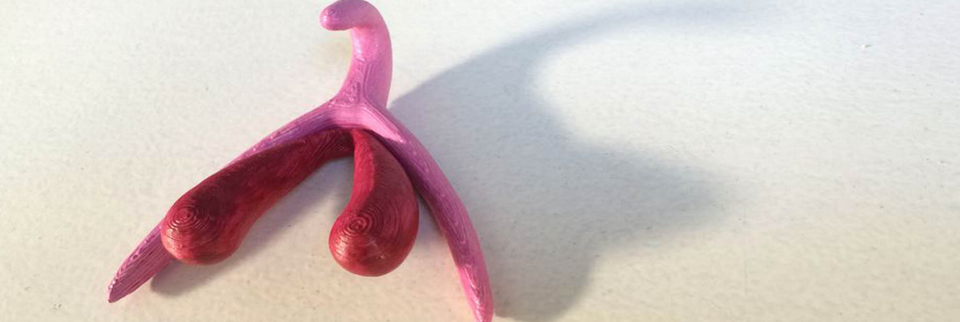The 3D-printed clitoris opens the door to sexual revolution

Over the past three decades, 3D printing has expanded from modest origins—a stereolithographic prototype designed by Chuck Hull of 3D Systems Corp. in 1984—to being hailed, in 2012, as the vehicle of a third industrial revolution. In the past few years alone, we’ve 3D-printed Van Gogh’s ear, a hi-tech waterproof bikini, some synthetic rhino horns in an attempt to stop poaching, and began to make real inroads into the world of 3D-printed prosthetics. At this year’s Paralympic games in Rio, Denise Schindler became the first Paralympic cyclist to use a 3D-printed prosthesis. Oh, and you can also turn your child’s latest drawing to sculpture for a modest-ish fee.
A new anatomical model could change sex education as we know it
And now, 3D printing has yielded a new anatomical model that could change sex education as we know it: a full-size clitoris. Until now, the most accurate representations of the clitoris were three-dimensional MRI scans that date to 2009—before which, if you can believe it, the true nature of the clitoris was a complete mystery. But finally, in 2016, women will finally know what the entirety of their primary sexual organ looks like and, with any luck, young girls will soon have access to the model in sex ed classes. (French students will begin to make use of the model this month!)
The common perception of the clitoris, asserted by dictionaries and textbooks alike, is that it is a small, sensitive organ (called “pea-sized” or referred to as a “button”) located at the top of the vulva. This 3D model, a collaborative project from independent researcher Odile Fillod and photographer Marie Docher, decidedly proves otherwise. It refutes myths that have long repressed female sexuality and will hopefully lead to a demystification of that oh-so elusive thing: the female orgasm.

The model makes clear that, in addition to its visible head, or glans, the clitoris includes two shafts, or crura, about 10cm in length, which encircle the vagina. So, rather than a button, the clitoris in actuality appears to resemble a wishbone, or, aptly put by Minna Salami at The Guardian, a fleur-de-lys or (most thrillingly) a tulip emoji. Speaking for all of us (I would like to think), Salami writes, “[I]magine a world where it is common knowledge what a woman’s primary anatomically sexual organ looks like. Imagine how sexually empowered women who can visualise their clits will be.”



